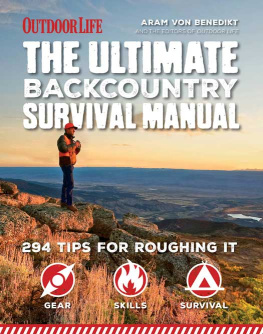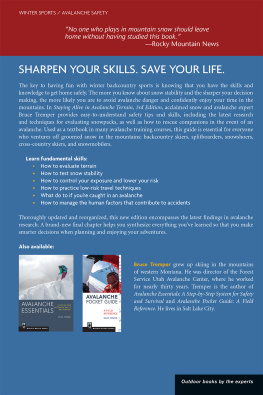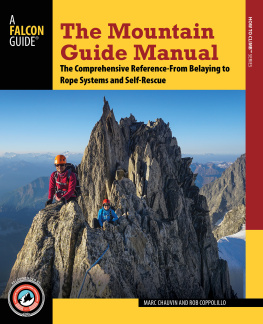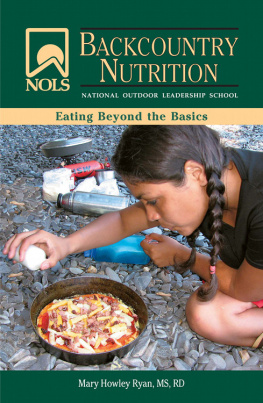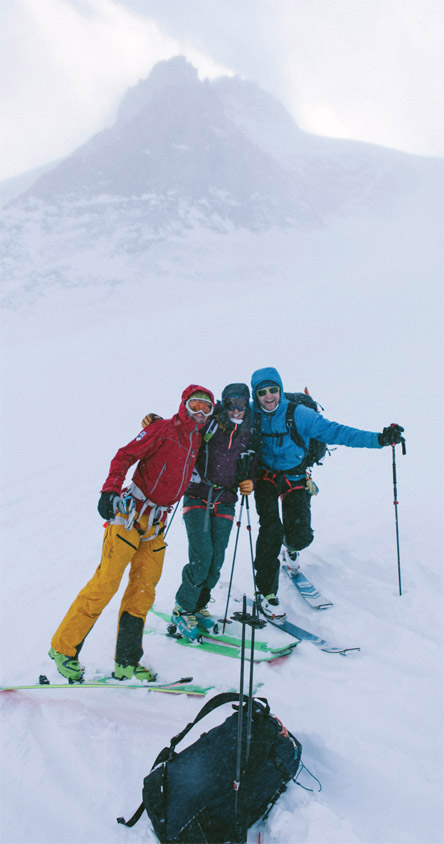A fter all this, Im going skiing. My bro and I have Sorcerer Lodge reserved for our fiftieth. Oh yeah!
Thanks to everybody who helped make the book happenmentors, guests, and family alike.
Sincere thanks for everyones photographic contributions, most of all Matt Kennedy and Mahting Putelis. Thanks for the friendship and being part of the team.
Fred Engel, my writing mentor and critic, I miss you. Thanks for all the hard feedback and great times. Im still a Golden State fan. You helped every one of your students and made our writing a bit less clunky too.
Matt Kennedy (right) contributed a ton of beautiful images for the book. Hes pictured here on the Gran Paradiso on a stormy morning in spring 2018 with his partner, Ali Vagnini (center). Thanks for the good turns and friendship!
MATT KENNEDY
For the crew who wrote side-bars and offered adviceKarl Birkeland, Colin Zacharias, Sheldon Kerr, Mike Hattrup, Rob Hopkins, Benja Glatz, Alex Do, Ken Wylie, Marc Chauvin, Joe Stock, Bruce Kay, Tom Murphymany thanks. You helped put some serious cred into the book.
Skier, hunter, photographer, founder of Hunt to Eat, my travel partner and good buddy, Mahting Putelis
MAHTING PUTELIS
Many friends and mentorsBrian Lazar, Blase Reardon, Dylan Taylor, Wil Rickards, Mikey Arnold, Joe Valloneassisted with suggestions, clarifications, and ideas. I owe you.
Im off to start packing for Canada, to teach with Colin, the Snow Yoda. Ill take notes.
Where you ski should express everything you know about the snowpack.
Colin Zacharias
Planning is bringing the future into the present so you can do something about it now.
Alan Lakein
T hats as simple as it getswhen planning our tour, we take all the information available to us and select a couple options for a fun, satisfying tour with friends. Just as we sit down the night before or morning of a tour, lets start the book with a look at trip planning.
A solid trip plan reduces hazards . . . and also delivers the best turns. Dr. Dominik Schneider proves the point outside Nelson, British Columbia.
MAHTING PUTELIS
Going into the backcountry requires prep and planning. A checklist, process, or flowcharthowever you conceive of ithelps mitigate risk, find the best skiing, and deliver safer, more enjoyable touring. This graphic captures the birds-eye view of one process.
COLIN ZACHARIAS
But why trip plan in the first place? Cant we just wing it? Our trip plan anticipates conditions and hazards. It prepares our team for what we expect to see in the field, rather than leaving us to merely react to conditions during the day. Think of the trip plan as a pre-event rehearsal. Do actors blow off a rehearsal and just go for it the night of the show? Of course not, and our trip plan offers solutions and mitigation strategies before we find ourselves exposed to hazards like avalanches, rock- and icefall, dangerous cold or hot weather, or the disconnect of an incompatible team.
We pre-bias and de-bias during our trip plan, elicit opinions, gather information, and come up with touring options that allow us to adapt during the day. This chapter offers one take on how to do it.
Backcountry Prep
Our trip plan really begins late summer and early fall, when we revisit our gear, begin working on ski fitness, incorporate new teammates, identify some season goals, and further develop our run atlas. Between your mountain biking, rock climbing, competitive lawn-dart tournaments, a little work, perhaps some parenting, you should find the time to lay the foundation for a fantastic ski-and-ride season in the months leading up to it.
The Notebook
M y mentors and I teach the AIARE Risk Management Framework during AIARE 1 and AIARE 2 courses. This process helps students approach backcountry touring and mainly focuses on the avalanche hazard.


